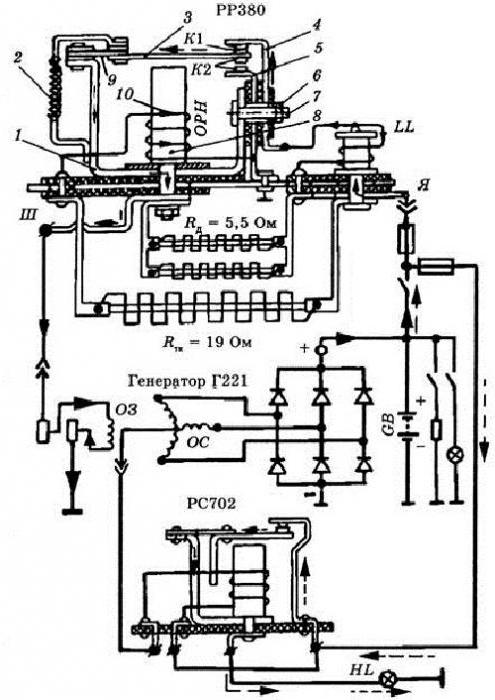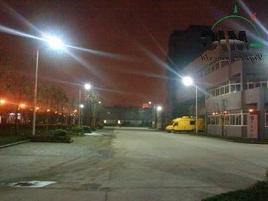Relay-voltage regulator VAZ-2107: the principle of operation and varieties
The voltage regulator VAZ-2107 is necessary forstable operation of all electricity consumers. It is more correct to call it a regulator without adding a "relay", since modern cars are equipped with electronic devices based on semiconductors. And there is no electromagnetic relay in the structure. But it is on the example of a mechanical regulator that the work and the principle of the device functioning should be considered.
What is the regulator needed for?
The cars use generator sets, which produce variable three-phase voltage. After this, the following transformations take place:
- Three phases are fed to the rectifier block of six silicon diodes.
- The rectification of each phase occurs and the conversion of the voltage into a constant unipolar one.
- The entire variable component is cut off with the help of an electrolytic capacitor.
- The rectified voltage is applied to the power contact in the back cover of the generator.
The voltage value depends on the speed of rotation, since the generator output can be 10 V at 1000 rpm and 30 V at 7000 rpm (if not using a regulator).
Therefore, it is necessary to stabilize the voltage. The way that is used in household appliances, - installation of a simple zener diode, is not suitable. The power of the generator is very high, the current is above 50 A. If you can find such a zener in the nature, then it will not yield to the size of the engine of the car. The cost of production of such a device is very high. Photo of the voltage regulator VAZ-2107 can be seen in the article.

But there is a basic requirement for the operation of any generating set:
In the stator winding, an electric current can be generated only if a permanent magnetic field is acting on it.
To create a magnetic field, you need to wind itrotor supply voltage. And in order to make the magnetic field constant, it is sufficient to stabilize the supply circuit of the excitation winding. And it has a maximum current consumption of not more than 2.6 A. It is much easier to stabilize.
Electromechanical devices
They have not been used for several decades, since they have significant drawbacks:
- A small resource.
- The need for frequent maintenance.
- Massive construction.

The main components of the device:
- Electromagnetic relay.
- Thermocompensating resistance.
- Throttle.
- Additional resistors - 2 pcs.
The anchor is secured with a clamp to the bimetallic plate. Such a relay-voltage regulator VAZ-2107 (carburetor in the injection system) was completed with the first issues of the model.
Processes in the regulator with the engine stopped
The whole cycle of the device can be divided into several stages:
- As soon as the ignition is switched on, the current flows from the battery to the throttle core.
- The current also passes through the normally closed contacts, is applied to the terminal "Ш" of the regulator.
- The goal is the excitation winding. It is energized when the ignition is switched on.
- Voltage comes through the contact "I" on the resistance of the thermal compensation and the winding of the regulator, the second end of which is connected to the ground.
- As long as the magnetizing force at the core is insignificant, the contacts K1 are closed, current flows through the rotor winding of the excitation. Its value is of the order of 2.6 Ampere.
- At the same time, the current flows to the switch in the ignition switch, normally closed contacts, clamp, lamp in the dashboard, relay for controlling charging.
When the engine starts

As soon as the engine is started, the following processes occur:
- Magnetization of the core.
- The force of the spring is overcome, and the group of contacts K1 is opened.
- The first adjustment stage is activated.
- Electric current goes to the throttle and additional resistance (R ext = 5.5 Ohm).
- The current in the rotor winding gradually increases, and the voltage decreases.
- The group of contacts K1 is closed.
The process is repeated again, the armature vibrates andconstantly closes and opens contacts. The voltage on the excitation winding is then fed, then no. When the rotor rotates very quickly, a small resistance is turned into the winding circuit, as a result of which the voltage rises to a maximum of 14.6 volts. The magnitude of the current in the winding increases to such a value that the second group of contacts K2 is attracted. The second stage of voltage regulation is switched on.

Features of semiconductor structures
All the above processes can be applied toelectronic regulators based on semiconductors. But only the functions of power contacts were taken over by transistors. In total, two types of electronic devices can be distinguished:
- Contact-transistor, which are a symbiosis of a mechanical and electronic regulator. The reliability of devices of this type still leaves much to be desired, since there are mechanical elements in the structure.
- Fully non-contact - made on a modern electronic base. Allow more effective conduct of voltage regulation in the on-board network.
Some motorists do not know where therelay-voltage regulator VAZ-2107. On new machines it is mounted directly in the generator housing in one unit with brushes. On old versions of cars they were installed in the engine compartment, connected to the brush mechanism by wires.
</ p>




